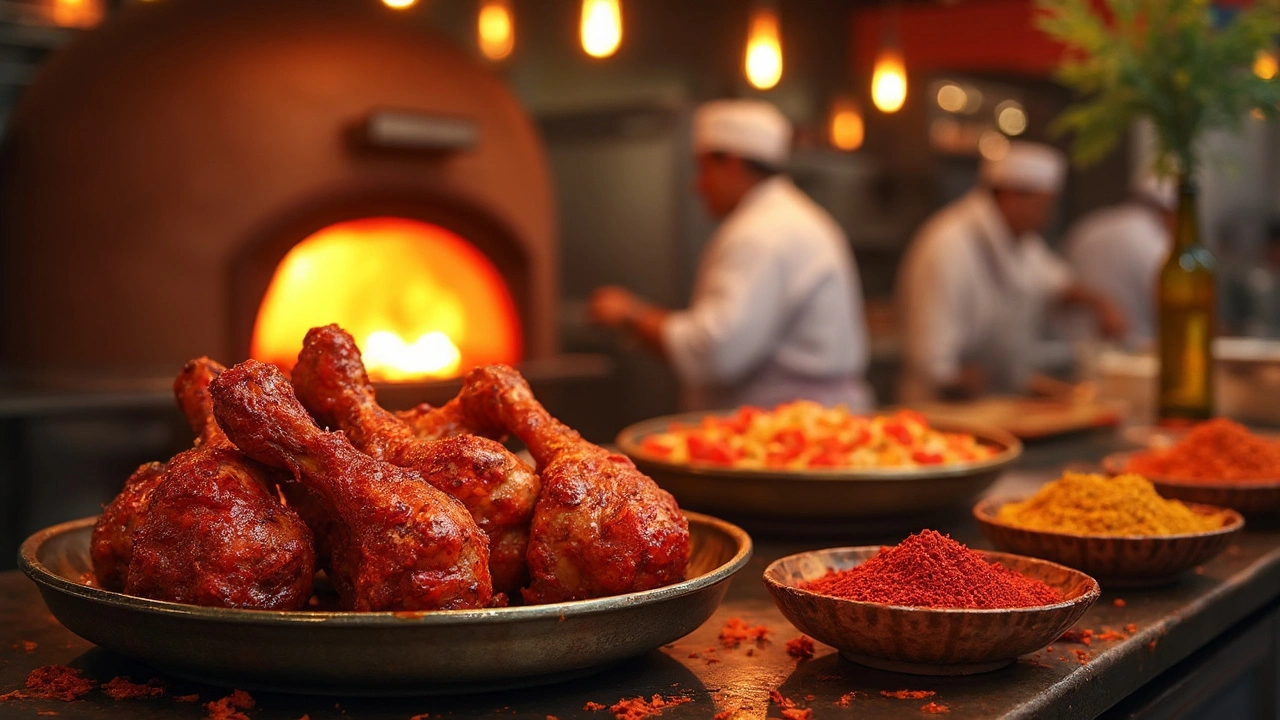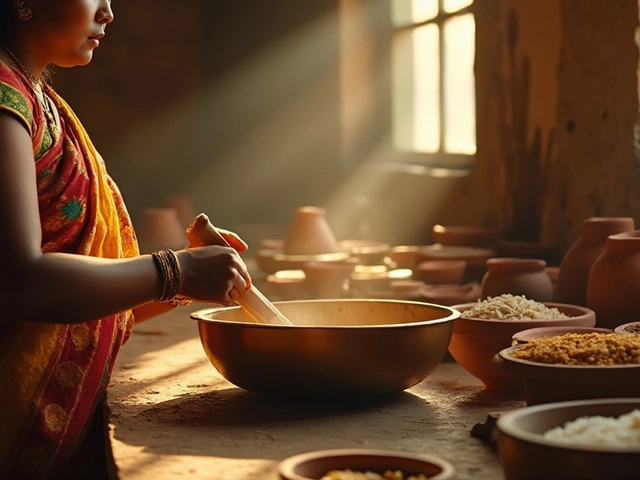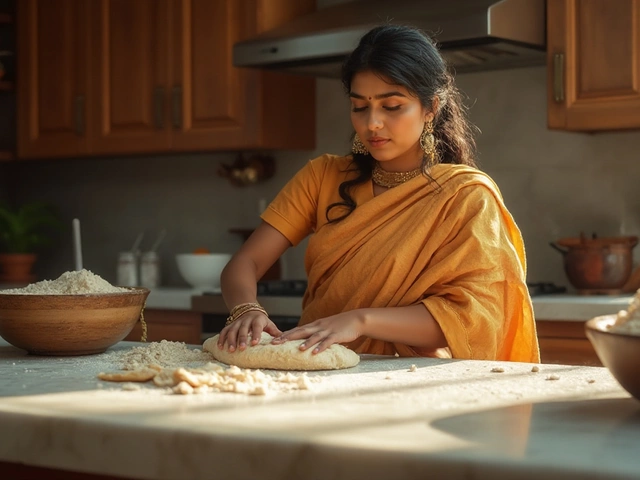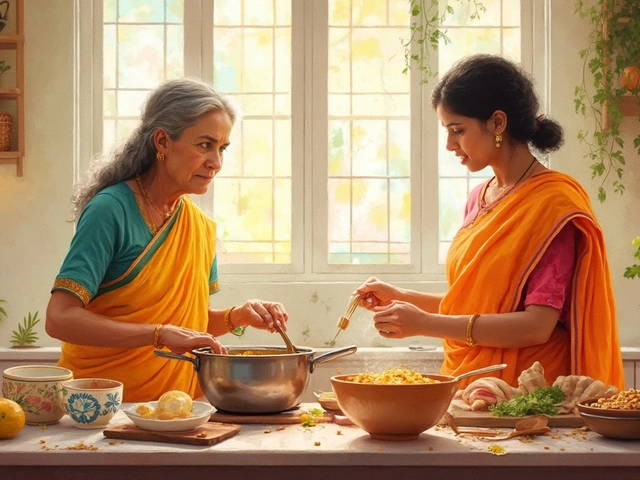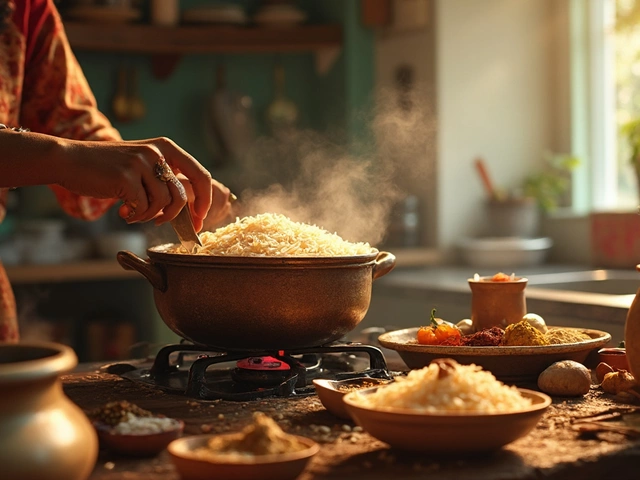Bite into tandoori chicken and the color practically jumps out at you—bright, bold red. If you’ve ever tried to make it at home and ended up with brownish drumsticks instead, you’re not alone. The truth is, the secret behind that famous tandoori red isn’t just in the spices.
Knowing exactly what goes into that marinade can save you time, money, and disappointment. Some people think it’s all about the red chili powder or paprika, but there’s more going on behind the scenes, especially in restaurants. You want your chicken to look like it just came out of a tandoor in Delhi? There are some tricks you’ll want to know.
This isn’t just about looks, either. That flashy red hue sometimes has less to do with taste and more to do with tradition, presentation, and even marketing. If you’re looking to impress friends—or just trying to please picky kids like Jasper and Leona—understanding the real deal makes all the difference.
- The Origins of Tandoori Chicken's Color
- Natural Ingredients Behind the Red Hue
- The Role of Food Coloring
- Home Cooking vs. Restaurant Styles
- Tips for Authentic Tandoori Color at Home
The Origins of Tandoori Chicken's Color
Tandoori chicken comes from the Punjab region of northern India. The dish shot to fame around the 1940s, thanks to Kundan Lal Gujral, who brought his clay oven tandoor technique from Peshawar to Delhi after India’s Partition. The signature color you've seen in every restaurant wasn't always about grabbing attention. Original recipes focused on smoky flavor, juicy meat, and a mix of spices, with the color as more of a side effect than the main goal.
If you look back at how it all started, the earliest versions of tandoori chicken got their coloring mostly from natural spices. Cooks used a mix of ground Kashmiri chili, which adds a mild kick and a blush of red. Sometimes they’d toss in paprika for an extra pop. The marinade’s yogurt base also played a role, helping those spices stick and develop that signature crust as the chicken roasted in a blazing hot tandoor oven, reaching up to 900°F (480°C).
But the bright, neon red you see at a lot of takeout spots in London, Toronto, or New York? That’s a modern twist—restaurants started adding food dye to catch people’s eye and boost the "authentic" look, even though it wasn’t common in home kitchens years ago. If you're curious how natural and artificial sources stack up, check out this comparison:
| Ingredient | Traditional Usage | Color Effect |
|---|---|---|
| Kashmiri Chili Powder | Common | Red, mild |
| Paprika | Occasional | Orange-red, sweet |
| Synthetic Food Dye (Red #40) | Modern/restaurant | Bright red, intense |
The whole trend with glowing red tandoori chicken didn’t just pop out of nowhere—it was a response to diners wanting their food to look as rich as it tasted. Over the decades, this color became a sort of "brand" for Indian grills around the world, but the original recipe was all about simple, smoky spice.
Natural Ingredients Behind the Red Hue
Let’s get real—most people making classic tandoori chicken expect that strong red color without reaching for a bottle of artificial dye. There actually are a few natural ingredients that do the trick, and they do more than just add color—they bring out flavor and even a little heat too.
The big player? Kashmiri red chili powder. This isn’t your regular chili powder from the grocery store shelf. Kashmiri chili is famous for being mild on heat but bold on color. One teaspoon can give your marinade that signature punch of red without making it too spicy. Think of it as the secret weapon used in tons of North Indian kitchens.
Other than Kashmiri chili, sometimes paprika gets the spotlight. Paprika is used for its bright color and a subtle smoky flavor. If you want your chicken to look legit and a little less intense on the spice scale, paprika is a solid swap. Some cooks also add a dash of beetroot juice or powder as an extra natural boost, since beetroot is a powerhouse when it comes to color. Even a little turmeric makes its way into some recipes for a more golden look, but on its own, turmeric won’t make the chicken red.
- tandoori chicken gets its red color mainly from Kashmiri chili powder.
- Paprika is another common ingredient for red color without much heat.
- Beetroot (juice or powder) is sometimes used for deeper hues naturally.
Let’s compare these common natural color-boosters in tandoori chicken:
| Ingredient | Main Role | Heat Level | Natural Color Impact |
|---|---|---|---|
| Kashmiri Chili Powder | Color, mild flavor | Low | Deep red |
| Paprika | Color, mild flavor | Very Low | Bright red-orange |
| Beetroot Juice/Powder | Color only | None | Purple-red |
The funny part? If you grab whatever chili you have at home, you might wonder why your chicken looks dull and doesn’t pop with color. That’s because not all chilies or powders work the same way. For the best look—and flavor—pick the right one. It’s not just about making the chicken look pretty for Instagram; it actually sets the whole eating experience apart.
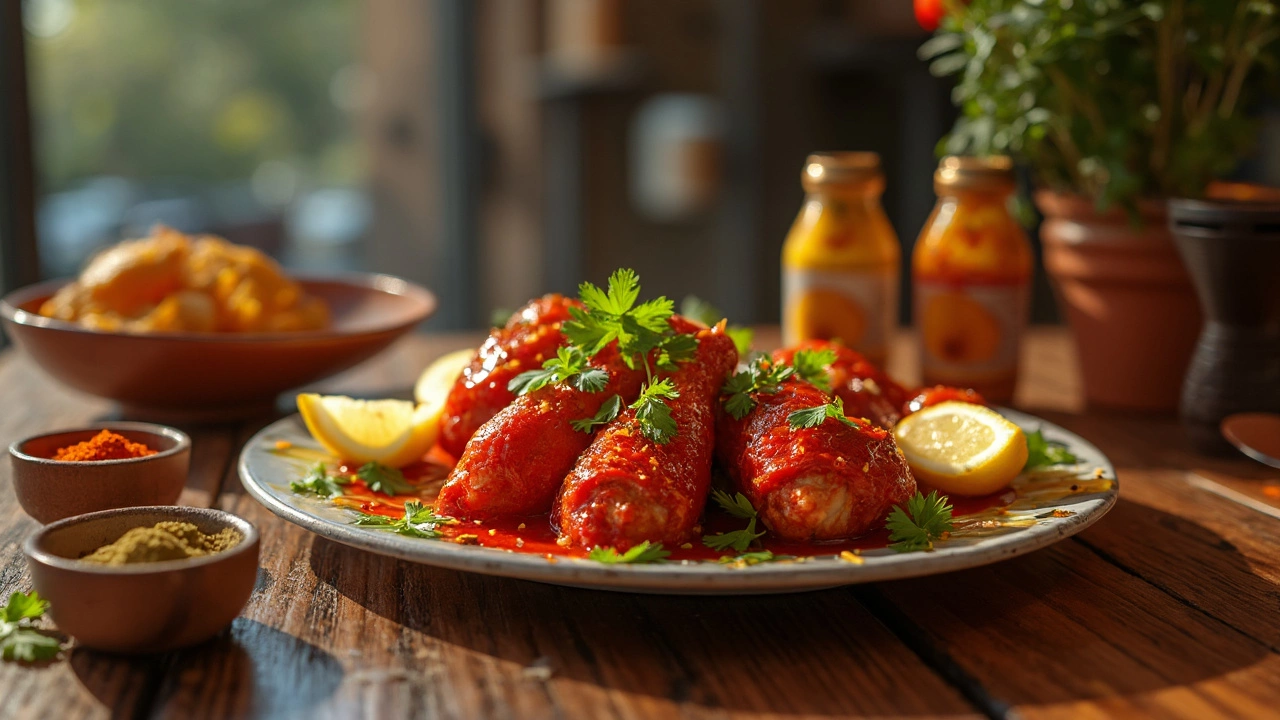
The Role of Food Coloring
Let’s get honest—if you see tandoori chicken that’s the shade of a red sports car, some food coloring probably helped it get that way. Traditional recipes use stuff like Kashmiri chili powder or paprika for a natural reddish tint, but it’s usually not enough for that bright color you spot in most Indian restaurants.
Back in the day, home cooks relied only on spices. But when tandoori chicken got popular and needed to look super appealing on buffet tables and restaurant menus, chefs started using edible food dyes. The most common one? FD&C Red No. 40, or sometimes a mix with yellow to get that fiery orange-red. Many Indian restaurants now add a pinch (or a big spoonful) of liquid or powder food coloring right into the marinade. Sometimes they mix it into yogurt before massaging the chicken. This helps the color soak in evenly.
| Source | Color Intensity | Common Use |
|---|---|---|
| Kashmiri Chili Powder | Moderate Red | Traditional home-style |
| Paprika | Light Red/Orange | Used for mild heat, color boost |
| FD&C Red No. 40 | Vivid Red | Restaurant, commercial kitchens |
You might wonder: is this safe? According to the U.S. FDA and the European Food Safety Authority, approved food colorings like Red 40 are considered safe in moderation for most people. But some studies link heavy use to allergic reactions or hyperactivity in kids, so if you cook for little ones (trust me, Jasper gets weirdly hyper with too many dyed foods), it’s smart to use less or skip it altogether.
If you want a restaurant-style look at home, a tiny bit of edible red coloring in your marinade will do the trick. Or, if you’d rather avoid artificial stuff, go heavier on natural spices—just know it might not be as Instagram-worthy. Either way, that red skin isn’t some magical result from the tandoor oven; it’s all about what goes in the marinade before your chicken even hits the heat.
Home Cooking vs. Restaurant Styles
Here’s a truth bomb: most people making tandoori chicken at home never get that restaurant-perfect red color. Why? Restaurants and street vendors often turn to food coloring to nail that signature look—something rarely found in your average home kitchen.
At home, we usually rely on basic pantry spices—cayenne, Kashmiri chili powder, maybe some paprika or turmeric. While these bring great flavor, they only give a gentle red or orange tint, never quite the dramatic red you see when dining out. Kashmiri chili powder stands out, though—it’s milder than regular chili but adds a pop of color, making it the go-to if you’re skipping artificial dyes.
In busy kitchens, it’s quicker and cheaper to use a dash of red food dye. Restaurant cooks often use a powdered blend, sometimes labeled “tandoori color,” which is basically food-grade Red 40. It doesn’t affect the taste, but it gives chicken that fiery look. Some places still use only natural spices, but if your tandoori chicken comes out looking like it escaped a cartoon, odds are there’s dye involved.
Here’s a side-by-side of what typically goes into tandoori chicken coloring at home versus a restaurant:
| Color Source | Home Cooking | Restaurant Style |
|---|---|---|
| Spices | Kashmiri chili, paprika, turmeric | Kashmiri chili, paprika, turmeric |
| Food Coloring | Rarely used | Commonly added |
| Color Intensity | Light to medium orange-red | Bright red |
Chasing that restaurant look at home? Try this:
- If you’re okay with it, a tiny pinch of red food coloring (about ¼ teaspoon for 1 kg chicken) will get you close to restaurant style.
- Want to skip the dye? Double up on Kashmiri chili powder, but don’t expect neon results—it’ll be flavorful and only a bit redder.
- For health reasons, some people use beetroot powder or juice for color. The effect is subtler, but it’s a natural option.
The thing is, either way you go, you’ll get that smoky flavor if you grill right. So don’t sweat just the color. Make sure your tandoori chicken tastes as good as it looks!

Tips for Authentic Tandoori Color at Home
If you’re aiming for that restaurant-style look with your tandoori chicken, there’s a real knack to nailing the color without going overboard on the chemicals. A lot of folks just reach for a bottle of red food dye, but it’s totally possible to get that bold color with a mixture of natural ingredients—plus a few practical tricks up your sleeve.
The first step is your spice selection. Kashmiri chili powder is your friend here. It packs color, not crazy heat, so you don’t end up with chicken that’s spicy enough to scare off the kids. If you can’t find it, a blend of paprika and a little regular chili powder works too, but go light or it’ll mess with the flavor. Some people use beetroot powder or even a splash of pomegranate juice to give a natural red tint. Just a warning: these can add a subtle earthy or fruity flavor, so try a tiny batch before committing.
If you feel like the color still isn’t popping enough, there’s no shame in adding a pinch of food-safe red food coloring. Go for the gel variety if you want less mess and more control over the shade. A little goes a long way—seriously, don’t dump it in or you’ll be eating highlighter chicken.
- Marinate the chicken for at least 6 hours, overnight if possible. The longer it sits, the more the color and flavor soak in.
- Always add lemon juice or vinegar to the marinade. Acid helps the color set into the meat and gives that signature zing.
- Yogurt in the marinade boosts the color’s hold, too. Full-fat is best—it sticks to the chicken better and gives a creamy texture.
- Cook at a high heat—use your oven’s top rack or, if you’re feeling extra, fire up your grill. High heat gives those crispy, dark edges while holding onto the vibrant red inside.
If you want to skip artificial coloring but still crave that Instagram-worthy photo, try brushing a little extra marinade on right before serving for that final hit of color. Don’t stress if it’s not a perfect match to what you see at big restaurants—homemade means you’re dodging extra chemicals, and you’re in full control of what goes into your food. Plus, you get bragging rights for doing it legit.
- Poplular Tags
- tandoori chicken
- red color
- tandoori marinade
- food coloring
- Indian cuisine





